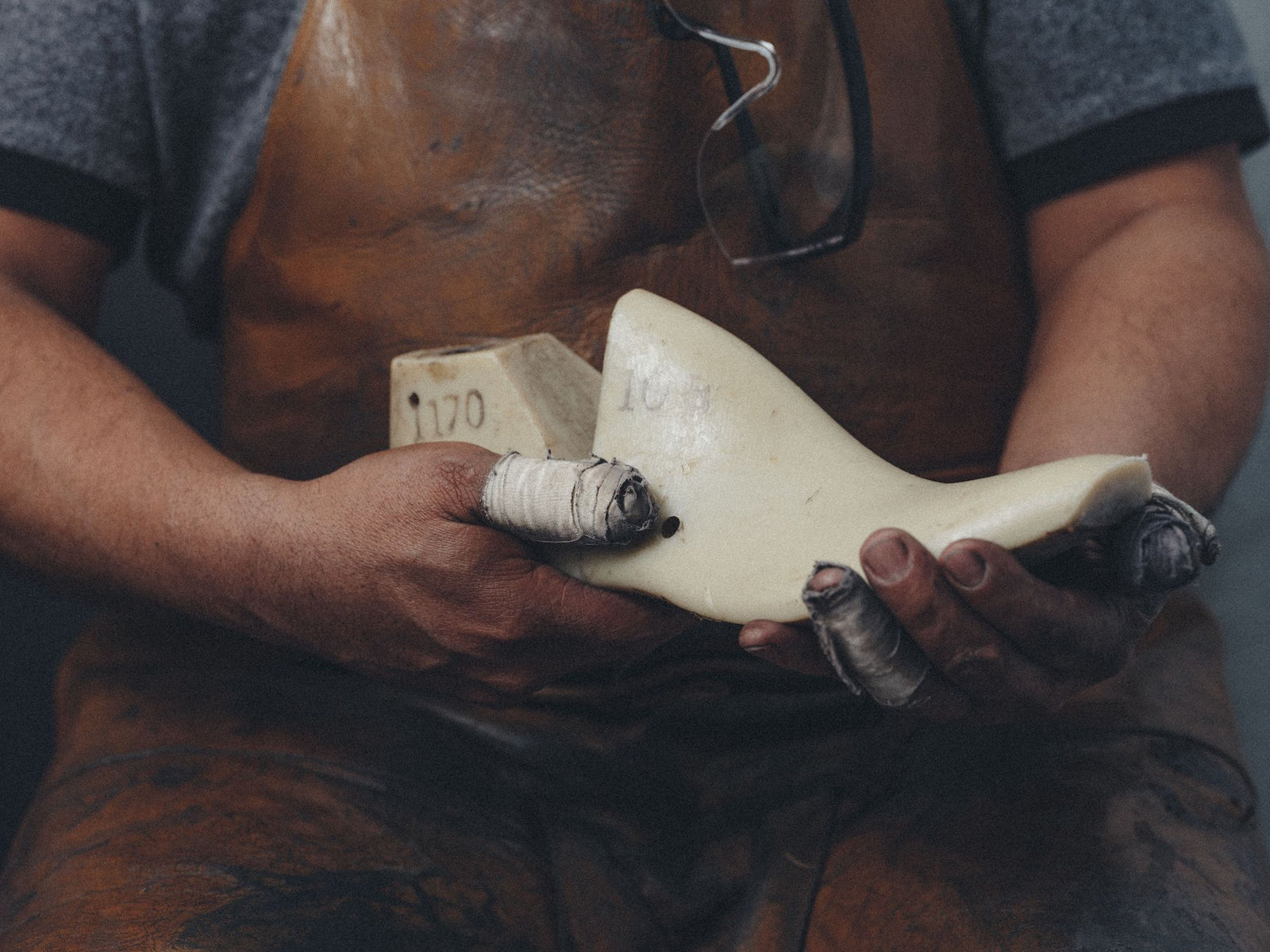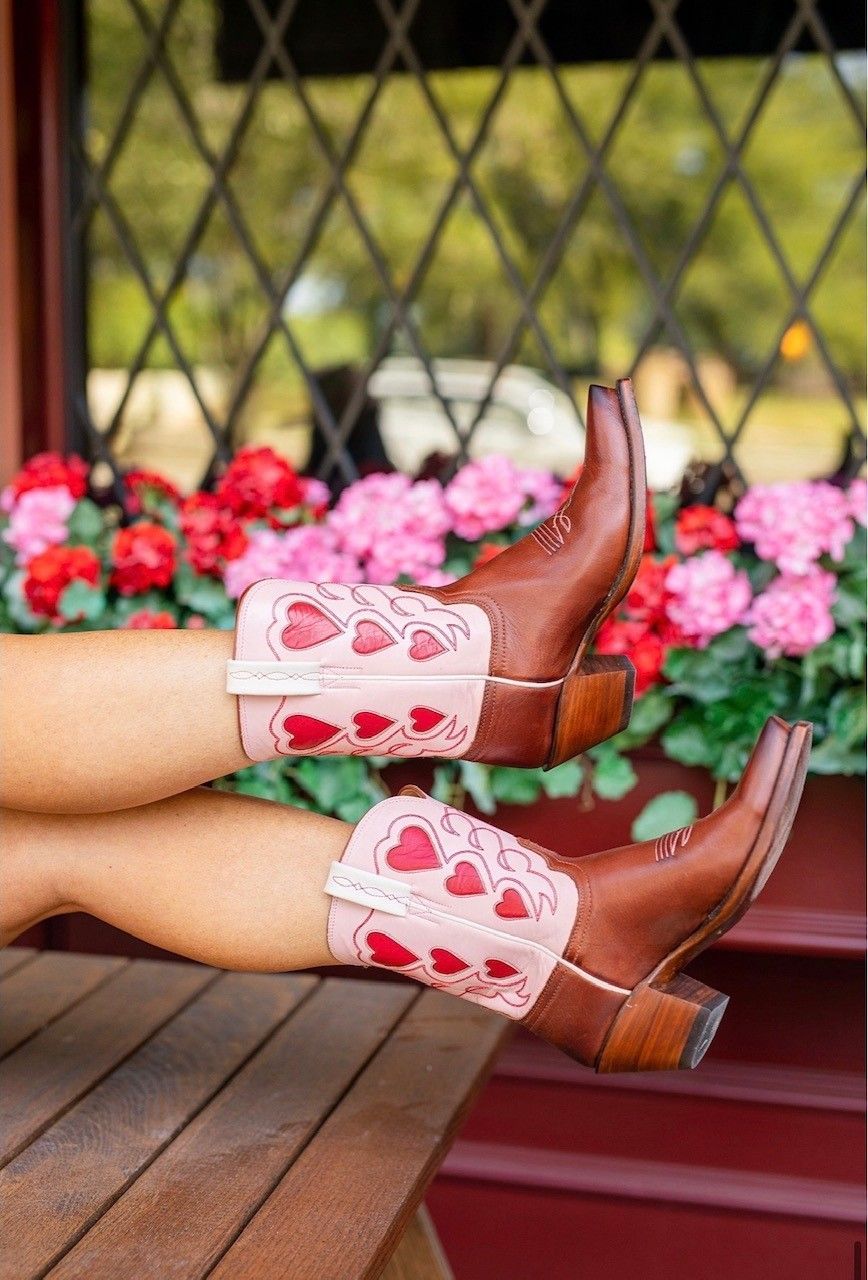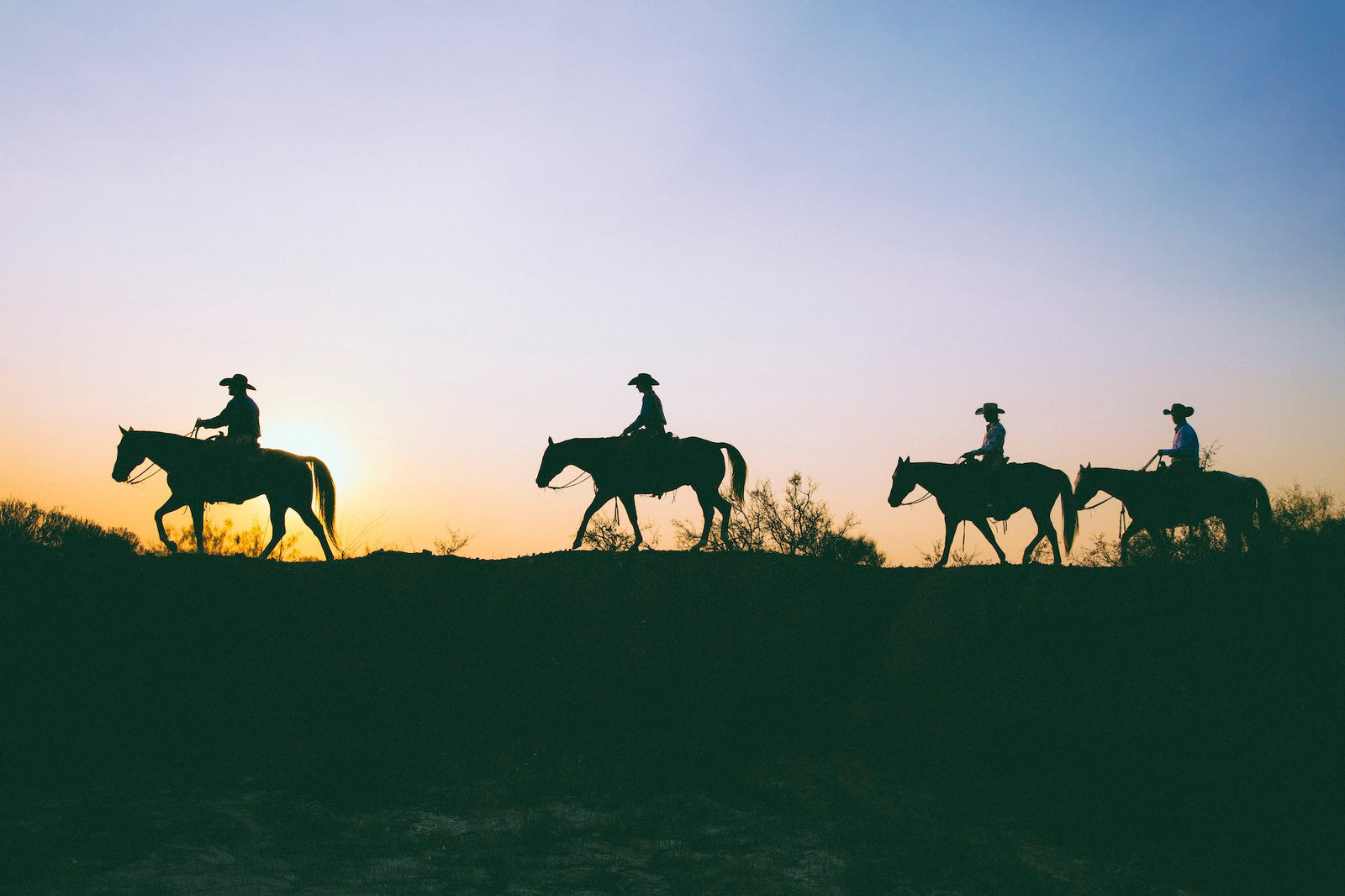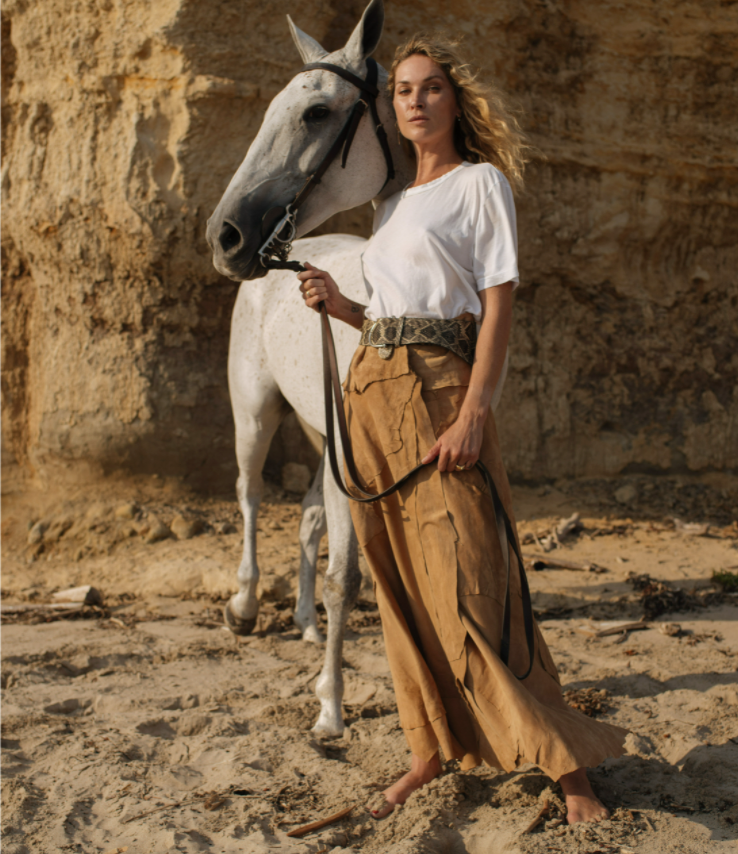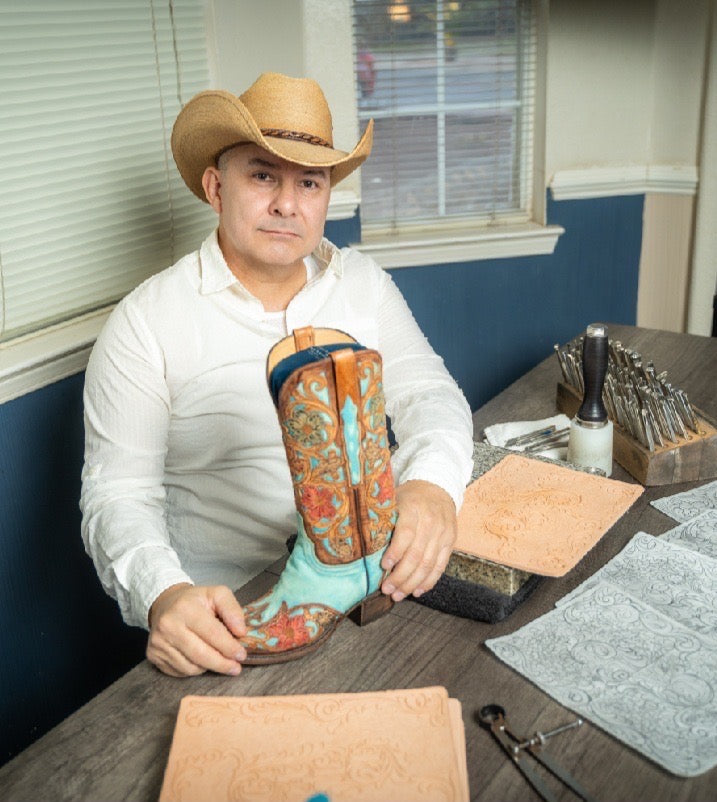
1883 was a landmark year for Texas leather craftsmen. It was the year Salvatore and Joseph Lucchese launched their first bootmaking shop in San Antonio. It was also the year George C. Slade went into the saddle making business.
Slade was only an apprentice at Waco’s renowned Padgitt Saddlery Co. when the Lucchese family was starting its empire in 1883, but he quickly worked his way up to head saddle maker, training his son, Will A. Slade, along the way. By 1929, the first Slade Saddle Shop opened its doors in downtown Uvalde, Texas, where a devoted clientele of working cowboys and legendary names like Will Rogers and Pancho Villa, came from all over the Southwest to buy saddles and leather supplies.
A lot has changed since the first generation of Slade leather craftsmen. The business has seen ups and downs, with shop relocations and pauses in production over the years, not to mention the modern day rise of assembly line operations. But today, the Slade Saddle Shop in Luling, Texas still bears the torch of its family’s proud handmade trade.
Father and son, Will and Slade Paradeaux (fourth and fifth-generation Slade craftsmen, respectively), work out of their two-room saddle and leather shop five days a week, doing what their fathers and grandfathers did before them — hand tooling, stitching and dying customized Slade saddles and various Western leather goods for the working cowboy, from knife scabbards to custom batwing chaps.
Slade Paradeaux, the great-great grandson of his namesake, George C. Slade, started sweeping the floors of his family’s Uvalde saddle shop when he was six years old. By 10-years-old he was fiddling with his uncle’s leather tools, and by 12 he was hand tooling his own designs on any piece of spare leather he could find. Paradeaux now spends about eight hours a day working alongside his father, Will, amidst an array of work benches and cluttered tool walls, filled with hundreds of specialized tools necessary for their traditional process.
“I wish I could’ve watched my great-grandfather at work,” Paradeaux says about George C. Slade, who passed away before he was born. “But I’m sure he looks down on me and helps me out every once in awhile.” Not every Slade (or Paradeaux) has inherited the family’s trademark artistic flair — what the family calls the “Slade gene” — but Slade Paradeaux happens to be one of its grateful recipients. And that genetic disposition could account for the ease and fluidity of his work.
His style of meticulous hand tooling simply seems like second nature. The shop’s daily quota varies, with orders ranging from briefcases and iPhone cases to saddle repairs and customized tapadero requests. But Paradeaux’s technique remains the same. He first sketches his designs freehand on vegitan leather (sourced from an Amish community in Pennsylvania) with a small stylus tool (“basically a leather pencil”), which he uses to create seamless floral motifs, like oak and maple leaves or symmetrical basket stamp designs.
A countless range of options can be tapped from Paradeaux’s free-flowing reservoir of classic Western designs that he’s been building up for decades. “I’ve been doing this so long now, I don’t have to concentrate as much as I used to,” he says as he switches tools.
After the stylus, he goes back over his patterns with a small swivel-edged knife to cut the design into the leather for the trademark dimension of a hand-tooled piece of leather. After the pattern is established, Paradeaux then chooses from an array of specialized stamping tools, like sunbursts and bevelers, for a final flourish. In a ¾-inch corner of a Slade saddle, you can spot the use of nearly 10 individual tools, all wielded and placed expertly by the Paradeaux men. The designs are classic, but no two pieces are ever the same.
The work takes time and a multitude of specific tools. The shop’s workbenches and tool benches are shrouded with a jumble of pliers, screwdrivers, edgers and hole punchers. And the shop itself seems to swell with the history and success stories of its storied process, from vintage memorabilia to recent examples of their work. Finished and repaired saddles quickly pile up a back corner. The walls feature murals of cowboys and cattle. And original oil paintings, like the dramatic Western landscape and chase scene entitled “The Odds of Change,” created by Paradeaux’s uncle, Bud Breen, a renowned Western artist, hang over the main work area.
It’s a far cry from the modern scenes of assembly line production, which distribute the majority of tooled leather designs being sold in the U.S. with a rapid embossing method, wherein the leather is imprinted with pre-fabbed designs with a hydraulic press.
“Other places can make more for a lower price because they’re stacking ‘em deep and selling ‘em cheap,” Paradeaux says. “That’s okay. We end up repairing a lot of those saddles, so it’s good for business… But when our custom saddles leave the shop we never see them again.”
It takes the Paradeaux men between 40 and 45 hours to handcraft a Slade saddle and they maintain a steady 8 to 12 month waiting list for their sought-after creations. They attribute their backlog to a continuously expanding list of referrals and, of course, their sterling reputation cultivated over the last five generations. The first Slade Saddle Shop in Uvalde was once an epicenter for “the working cowboy.”
“Our shop was always full of ranchers and cowboys from all over the state,” Will Paradeaux says. “More cows were traded next door at the Kincaid Hotel than any other place in Texas at the time. And they all knew our shop—and saddles—catered to the working cowboy.”
Today, Luling might not operate as an epicenter of cowboy culture like the Slade shop of the past. But in addition to their saddle orders, the Paradeauxes now rely on wholesale and online orders, like knife scabbards for Cavender’s Boot City and other mom-and-pop country stores, along with hunting equipment like rifle slings and tack, for area ranchers.
Paradeaux says the wholesale orders are easier to fulfill, but says custom requests, from Bible covers with cowboy church logos to suspenders and iPhone cases, are becoming increasingly popular. “People are just looking for something that’s their own,” Paradeaux says. “Something that no one else in the world can have because no two pieces are ever the same. There’s a status behind that — on top of the quality of the work.”
He has, however, struggled to think of what the future holds. “My shop is far and far between today,” he says. “They’re not teaching trades in school anymore. I learned leather making in high school, but today it’s all about computers. I don’t have an apprentice, so where is this all going to go?”
He admits to an increasing number of clients who write him a check for double their quoted price. “I point out their mistake and they say that’s how much they think it’s worth,” he says. “People don’t want to see this industry die.”


